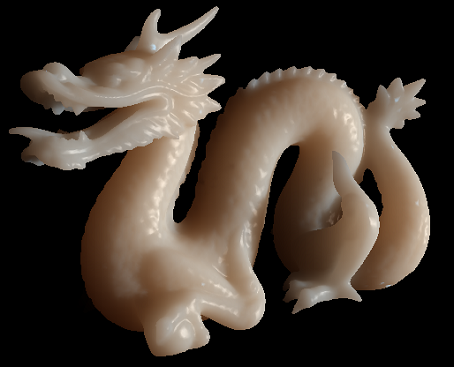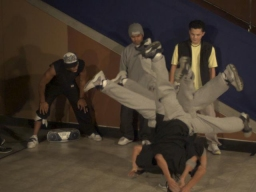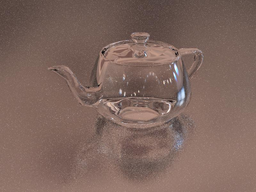Subsurface Scattering
All non-metallic materials are translucent to some degree. This means that light scatters inside the material before being either absorbed or leaving the material at a different location. This phenomenon is called subsurface scattering. As an example, a translucent marble dragon is shown here. Note the soft and smooth appearance as well as the light diffusing through the marble.
True subsurface scattering cannot be simulated using the ubiquitous BRDF (Bidirectional Reflectance Distribution Function). Instead it requires a full simulation of the BSSRDF (Bidirectional Scattering Surface Reflectance Distribution Function). Traditional methods such as monte-carlo integration are quite good at simulating subsurface scattering, but it becomes costly for highly scattering materials such as milk and skin. For these materials it is better to use a diffusion approximation. The diffusion approximation is much faster while remaining fairly accurate. We presented a multigrid based method capable of rendering heterogeneous, arbitrarily shaped objects within several minutes. This is collaborative work with Tom Mertens.


